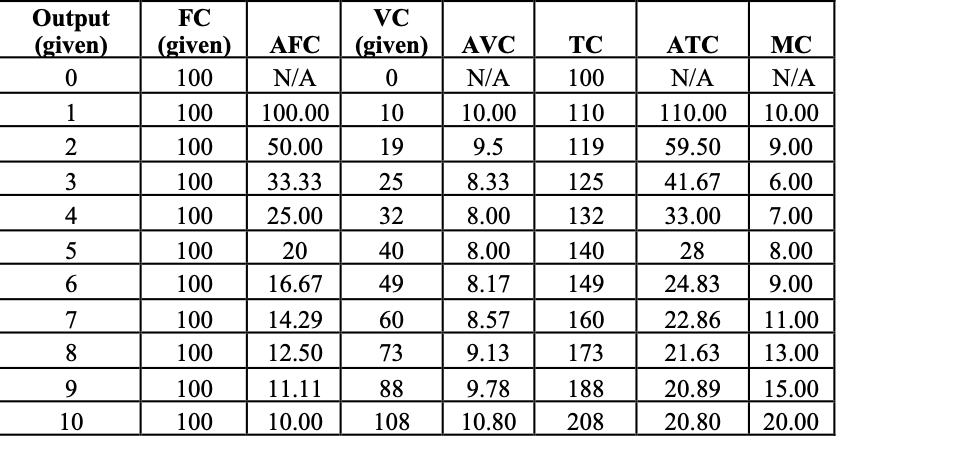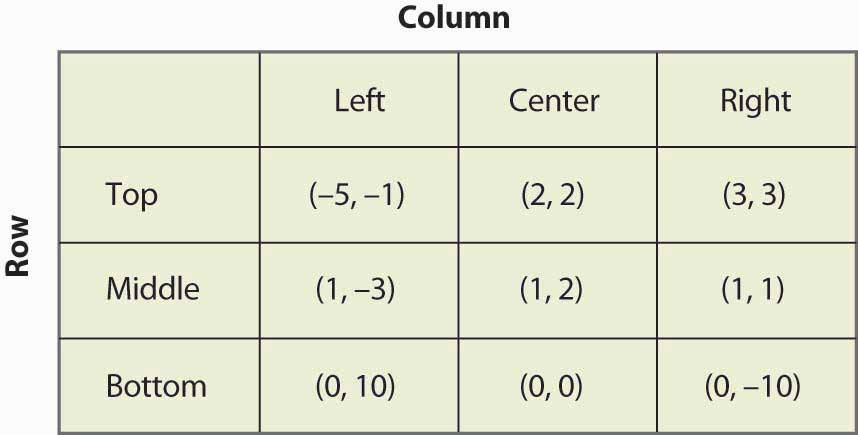According to Richard Rumelt, these 3 core elements form the kernel of any good strategy.
problem identification, guiding policy, and specific action
This is the correct interpretation for a good that has an elasticity of 6 at a certain price point.
A 1% increase in price would lead to a 6% decrease in quantity demanded. (yes it is also elastic)
This is used to describe the point at which a firm produces enough quantity to gain economies of scale and no longer be at a cost disadvantage.
Minimum Efficient Size
Are costs imposed by using the market.
Transactions Costs
A type of efficiency that relates to low cost production technology.
Technical efficiency
The most common measures of competitive advantage that are able to measure evidence of competitive advantage, but the sources of competitive advantage.
Economic and Accounting Measures
On average it cost a firm this much to produce each unit, if they produce 100 units and are using technology has the following average total cost function: ATC=1+q+(10/q)
101.1 (sure you can use a calculator, not your phone, on the exam if you need it)
A case of complementarity where the production of one good makes it more efficient for a single firm to branch out and produce other goods than it would be for multiple firms to specialize and produce the goods separately.
Economies of Scope
This water-related directional term refers to activities conducted early on in the vertical chain. (e.g., sourcing raw materials)
upstream
This type of efficiency relates to saving in terms of incentives, coordination, and transaction costs.
Agency Efficiency
A type of strategy that is adopted or arises overtime, as you come to realize that your original strategy was faulty or your circumstances change.
emergent strategy
You can make this type of profit while breaking-even or making a loss in economic profit.
Accounting Profit.
This can lead to lower costs and greater efficiency as the cumulative number of products produced increases.
Learning economies or learning curve
These assets cannot be redeployed for another transaction without cost.
Relationship specific assists
A term used to describe when a firm procures a set of inputs or services both through in-house production and outsourcing.
Tapered integration
A term used to describe games that result in win-win solutions, such as cooperative games or actions.
Positive Sum
According to the profit maximizing principle you should base your production quantity upon the intersection of these two curves.
Marginal Cost and Marginal Revenue
A production system exhibits this characteristic as it produces two products: X and Y. The production technology displays the following costs, where C(i, j) represents the cost of producing i units of X and j units of Y:
C(0, 50) = 75 C(0, 100) = 140 C(5, 50) = 290
C(5, 0) = 90 C(10, 0) = 170 C(10, 100) = 600
Key C(# of X, # of Y) = Total Cost
Economies of Scale
The excess economic profit from a transaction compared with economic profits available from an alternate transaction
Quasi-rent
This becomes an increasingly attractive option as scale increases.
Vertical Integration
This is actually a bonus economics primer question. According to the spreadsheet this is the minimum number of items you would need to produce to avoid making a loss if the market price for the items is $23?
According to the spreadsheet this is the minimum number of items you would need to produce to avoid making a loss if the market price for the items is $23?
7
The square where this game would settle upon.

Top, Right
Economies of scale are likely to play a large role in industries where these costs are high.
Fixed
Often large market firms have access to these economies, which can help to bring costs down when outsourcing.
Economies of Scale
Generally, this is the most efficient way of procuring generic and commodity type products or services.
Outsourcing or Market Exchange